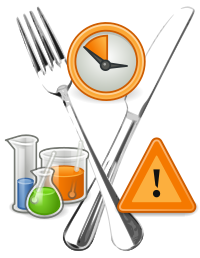
Photo from wikipedia
Abstract Mycotoxins are toxic secondary metabolites produced by fungi belongs to the genera Aspergillus, Fusarium and Penicillium that are capable of contaminating different types of food and feed. Mycotoxins can… Click to show full abstract
Abstract Mycotoxins are toxic secondary metabolites produced by fungi belongs to the genera Aspergillus, Fusarium and Penicillium that are capable of contaminating different types of food and feed. Mycotoxins can cause serious health complications to both humans and animals due to the carcinogenic, mutagenic, teratogenic and immunosuppressive characteristics of them. Therefore the aim of this work is to review the current status of mycotoxins contamination in Africa, and recommend the possible control strategies. The work mainly focuses on aflatoxins, fumonisins, ochratoxins and deoxynivalenol which frequently occurred in Africa in currently published research. Due to poor socio-economic conditions, most Africans are forced to consume mycotoxin contaminated food products and subsequently suffer to related health complications. Mycotoxin contamination is associated with poor agricultural practices in both pre- and post-harvest stages. Nowadays, mycotoxins contamination is becoming a serious problem in Africa because of the negative effects on human and animal health, economy and trade. Most of countries and regions have set the maximum limits of tolerance for mycotoxins in food and feeds due to the high risks to human and animal health. However, most countries in African lack effective strategies to control the level of mycotoxins in food and feeds. And the levels of mycotoxins in Africa frequently exceed the maximum limit set by the European Union. Therefore it is important for all African countries to develop effective strategies and methods, and formulate regulatory policies which are tight, and implement strict standards to monitor the harmful mycotoxins in food chain.
Journal Title: Food Control
Year Published: 2020
Link to full text (if available)
Share on Social Media: Sign Up to like & get
recommendations!